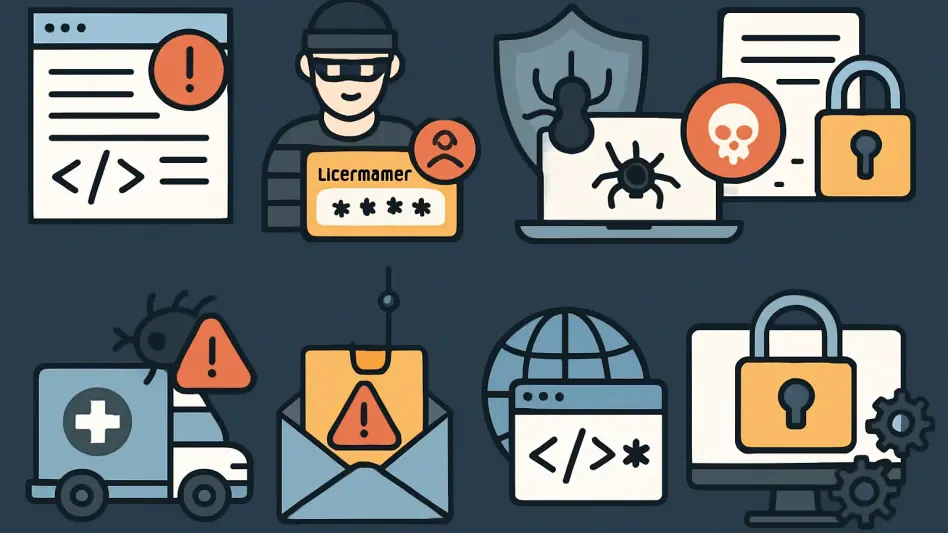The proliferation of Artificial Intelligence (AI) within cybersecurity has ushered in a new era of both innovation and complexity, fundamentally altering how digital defenses are conceptualized and executed. This transformative force is redefining traditional paradigms, presenting opportunities for enhanced security measures while simultaneously introducing substantial challenges that necessitate vigilant adaptation. As AI becomes more ingrained in the fabric of cybersecurity, its capacity for autonomous decision-making and the evolution of collaborative defense models are shaping how threats are detected, neutralized, and prevented. Tech leaders across industries are rigorously focusing on the implications of AI technologies, emphasizing the need for robust frameworks to govern their deployment and ensure safe integration.
Agentic AI: A Double-Edged Sword
Autonomous Decision-Making
Agentic AI, the subset characterized by its ability to make autonomous decisions, is revolutionizing operational paradigms within cybersecurity sectors. By facilitating autonomous task execution, this technology diminishes reliance on direct human intervention, thereby enabling a swift response to emerging threats. However, this independence comes with the caveat that such systems require careful oversight to prevent unintended behaviors. The ability to identify threats promptly and execute countermeasures effectively positions agentic AI as a critical tool in the cybersecurity arsenal. Yet, this autonomy introduces the necessity for stringent oversight and control measures to ensure these systems act as intended, particularly when faced with sophisticated, rapidly evolving threats.
Trust and Safety
In deploying agentic AI systems, establishing scalable trust models is imperative to maintain a balance between autonomy and safety within cyber environments. These models are essential for delineating the boundaries of AI functionalities and ensuring operations align with security objectives. As AI systems independently navigate complex digital landscapes, robust observability and governance mechanisms become crucial in mitigating associated risks. Strategic oversight enables systems to operate within predefined safety parameters, ensuring their reliability. Laying the groundwork for effective management includes implementing real-time monitoring, audits, and interventions, all contributing to operational safety and fostering trust in AI-enabled processes.
Empowering the Defender
Collaborative Defense Models
AI stands at the forefront of empowering defenders by promoting global collaborative defense frameworks that fundamentally alter threat management strategies. Through its innovative capacity to enable instantaneous knowledge-sharing across diverse networks, AI facilitates the immediate dissemination of intelligence that aids in preemptive threat mitigation. This model, akin to hive knowledge, leverages collective insights to anticipate and neutralize dangers before they reach critical stages, transforming defense responses from mere reactive measures into anticipatory actions. Such cooperative models amplify the effectiveness of cyber defenses, allowing them to adapt seamlessly to evolving attack patterns, thereby enhancing resilience.
Automating Threat Neutralization
The shift towards automating threat neutralization through AI is steering the cybersecurity industry away from traditionally reactive stances towards proactive safeguards. By implementing systems that analyze attack vectors autonomously, cyber defenses can systematically counteract a significant proportion of common threats. The integration of AI-driven solutions positions defenders to respond swiftly and decisively to threats, paving the way for enhanced security architecture that prioritizes anticipatory measures over reactive protocols. The transformation induced by this automation not only fortifies defenses but also optimizes resource allocation, enabling security teams to focus on emerging challenges rather than wrestling with familiar attack vectors.
Addressing Persistent Threats
Phishing and Credential Exploitation
Despite the advancements in AI and machine learning technologies, traditional threats like phishing and credential exploitation continue to challenge cyber defenses. AI’s uncanny ability to refine security models rigorously can significantly enhance efforts in combating these recurring threats. By automating the detection processes and continuously adapting to new tactics employed by cybercriminals, AI plays an instrumental role in fortifying defenses against these age-old tactics. The adaptive nature of AI systems allows for quick identification and categorization of suspicious activities, making it possible to thwart phishing attempts efficiently, thus significantly diminishing the window for potential exploitation.
Success Stories
Successful implementation of AI technologies in mitigating established vulnerabilities serves as a testament to its potential in enhancing cyber resilience. Companies such as Check Point provide exemplary cases of leveraging AI for automating threat detection processes. Their strategic use of AI underscores how it can revolutionize traditional security measures, showcasing a promising avenue for augmenting current defense strategies. Through AI-driven insights and analytics, systems can protect against historical flaws effectively, continually adapting to the ever-shifting landscape of cyber threats enabled by its predictive capabilities. These success stories highlight the transformative power of AI within the realm of cybersecurity, suggesting that its full potential is yet to be realized.
Adapting to Diverse Environments
Expanding Attack Surfaces
The rapid emergence of cloud computing, hybrid systems, and other modern digital infrastructures has exponentially broadened the attack frontiers in the cyber world. As businesses integrate these technologies into their operational frameworks, safeguarding the expanded attack surfaces becomes increasingly complex. Defenders, therefore, must adapt their strategies to encompass comprehensive protection that spans diverse environments—each characterized by distinct security challenges. A meticulous approach to defense is required to address the varied complexities of these digital landscapes and ensure the integrity and security of critical infrastructure across heterogeneous systems.
Differentiated Defense Strategies
A nuanced approach to crafting differentiated defense strategies that cater specifically to the unique needs of varied digital architectures is essential to maintain robust security. As AI-centric operations become intertwined with conventional workloads, focusing on their distinctive requirements can lead to more effective protection measures. Nataly Kremer from Check Point emphasizes the incorporation of specialized strategies aimed at securing different environments—an acknowledgment of the intricate dance between AI-driven methodologies and traditional defense postures. Tailored security approaches are pivotal, ensuring seamless coverage and protection of infrastructure across all layers while embracing the dynamic nature of AI deployments.
Preparing for Real-Time Threats
AI versus AI in Cyber Warfare
The rapid pace of AI-driven threats necessitates a re-evaluation of prevailing defensive strategies to effectively counter the possibilities of AI-originated attacks. The prospect of AI clashing with AI in cyber confrontations introduces an additional layer of complexity that must be meticulously managed and prepared for by security teams globally. As AI technologies continue to evolve, so does their capacity to engage in sophisticated warfare. This reality enforces the need for innovative solutions capable of anticipating threats and responding dynamically, equipping defenders with the means to counteract adversaries utilizing AI to their strategic advantage.
Instantaneous Response Capabilities
Agentic AI, a subset focusing on autonomous decision-making capabilities, is transforming the operational landscape within cybersecurity. This technology allows tasks to be executed autonomously, reducing dependency on human intervention and enabling rapid responses to emerging threats. Its independent nature underlines its potential as a vital tool in identifying threats quickly and deploying countermeasures efficiently. However, this autonomy necessitates stringent monitoring to prevent unwanted behaviors. Rigorous oversight is crucial to ensure these systems function correctly, especially when dealing with sophisticated, fast-evolving threats. The introduction of agentic AI in cybersecurity amplifies both capabilities and risks, making it essential for experts to implement control measures that guarantee these systems act as intended. As threats grow increasingly more complex, the balance between autonomy and oversight becomes paramount, demanding careful attention and management to harness the full potential of agentic AI responsibly.








